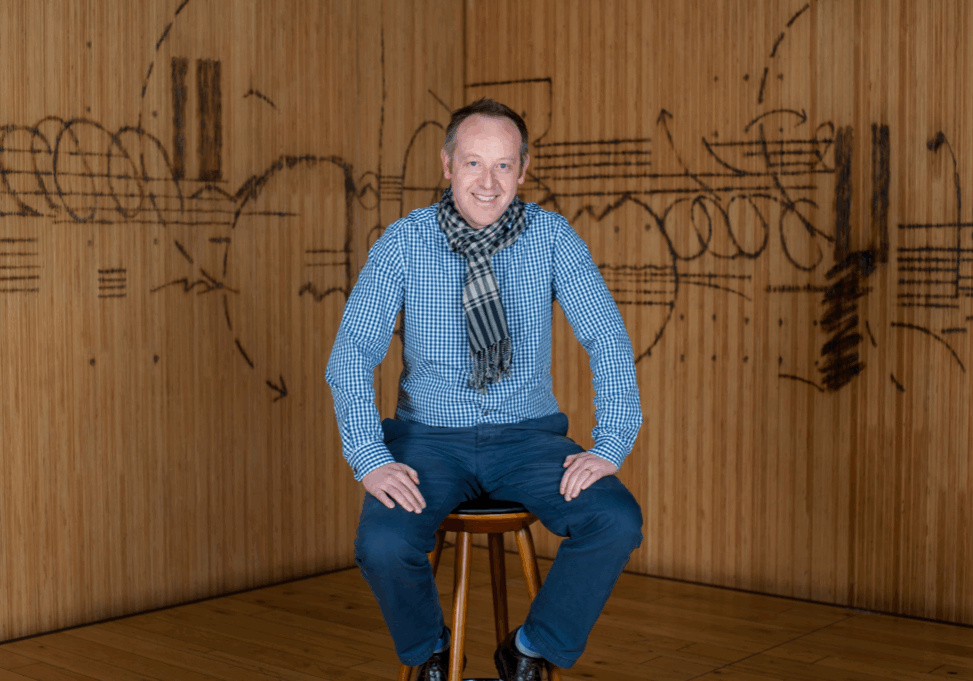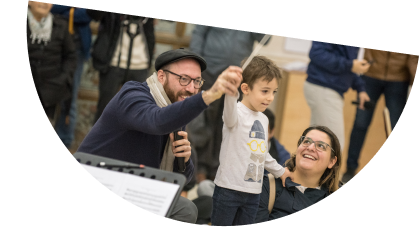“Schools are at the heart of every community and the arts should be at the heart of every school”
Phil Castang, director of Bristol Plays Music (UK), is a cultural manager with 25 years worth of experience managing highly successful music, arts and education projects. In this extract from his closing speech as moderator of Food for Thought: Enriching Teaching at the Teatro Sociale di Como, he takes stock of the current state of affairs and reflects upon how to bring about greater inclusivity in arts education through effective partnerships.
While researching for this conference I looked back to Why Opera Education?, an excellent RESEO report published by Ann Laenen in 2003. I was not surprised to find that past challenges were very similar to those we talked about in panel debates, presentations and workshops. We are still speaking about the same barriers: real and imagined, physical and psychological. Accessibility and affordability seem to be perpetual obstacles.
Many of the presentations we saw here at Food for Thought gave great examples of how we are breaking down these barriers.
We know buildings can be intimidating and that accusations of elitism remain. We continue to discuss the relationship between highbrow and popular culture and wonder how to overcome the effects of excessive entertainment choices on young peoples’ attention spans. What we have seen here at this beautiful Teatro shows that we understand the importance of being culturally diverse and relevant in our work, recognising a community that is constantly evolving, particularly now with the refugee crisis and mass immigration.
Direct value to society was also explored in Why Opera Education?, evoking the civic responsibility of making our work accessible to everyone. At the Ahead for Culture conference at the Royal Opera House in June 2015 it was asked “How can leaders at all levels, in all settings, make access to high quality arts and culture a genuine entitlement for all children and young people?”. The perception is that cultural education remains the privilege of some, and not all our children.
“A common agenda, continuous communication, shared measurement systems, mutually reinforcing activities”
Finally the 2003 report speaks about arts education through relationships with schools. The report states “it now seems more important to be well trained in science, mechanics, mathematics and computer science than to be trained in the arts”. Does this sound familiar?
It certainly does in the UK. On 14 October, Arts Council England launched a Cultural Education Challenge. Was the initiative proposed at this time because of extreme pressures on the national education system? Is this a mission to preserve cultural education in schools as part of the curriculum at a time when it is under threat? Well, it seems it was already under threat in 2003…
So we return to the starting question ”are schools still the right context for outreach activities in this day and age”?
Schools are at the heart of every community and the arts should be at the heart of every school. I would suggest that strong collaborative partnerships between schools and cultural organisations work to the principles of “collective impact”, which include a common agenda, continuous communication, shared measurement systems, mutually reinforcing activities and a backbone organisation.
Of course we know the way to capture any audience, particularly children, is through the heart and the mind and through experiencing (listening and seeing) and participating (playing and creating). Schools offer this captive audience.
“Our education programmes nourish the soul and inspire children like never before”
Over the past few days of this conference I have heard so many great and inspiring people talk about all kinds of amazing ways to engage children and young people through dance, theatre, opera and music.
In my mind we are doing well. We are doing very well. We have multiple entry points to our art forms with all kinds of discovery programmes. We have high quality multiple progression pathways and learning environments, which are inclusive and support the gifted and talented. We are producing great work with and for children and young people, work that is culturally aware, accessible and affordable. Our education programmes nourish the soul and inspire children like never before. Technology is giving us new platforms and innovative ways to engage.
The fact is arts education must now enrich the cultural life of schools, contribute to the curriculum, have an impact upon attainment, be character building, good for health and wellbeing, and have a measurable impact on the cultural and creative economy. It’s not much to ask, is it?
What we do is exceptional.
————————
Phil Castang, Head of Bristol Plays Music (UK)


